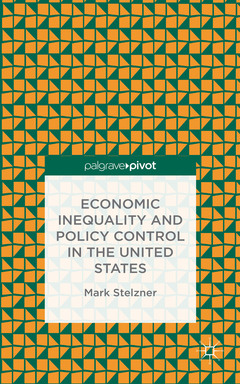Description
Economic Inequality and Policy Control in the United States, 2015
Author: Stelzner M.
Language: English
Subjects for Economic Inequality and Policy Control in the United States:
Keywords
Approximative price 58.01 €
In Print (Delivery period: 15 days).
Add to cart
Publication date: 01-2015
Support: Print on demand
Support: Print on demand
Description
/li>Contents
/li>Biography
/li>
The income share of the top one percent of the population in the United States has increased from a little over nine percent of national income in the 1970s to 22.46 percent in 2012 a 144 percent increase. What is driving this astronomic growth in incomes for some? Is it possibly the result of non-meritorious forces? If so, how has this incredibly unequal development coexisted, and indeed worsened, in a political system based on equality? In Economic Inequality and Policy Control in the United States, Stelzner tackles each of these questions, and, in order to further develop understanding, Stelzner looks to the past and analyzes our experience with income inequality and the orientation of laws and institutions from the Gilded Age through the New and Fair Deal. He concludes that we have the tools to tackle inequality at present the same policies we used during the New and Fair Deal. However, in order to make change durable, we have to eliminate the undemocratic elements of our political system.
1. Income Inequality in the United States Today 2. Changing the Rules of the Game 3. The Gilded Age, the Progressive Era, and the New Era 4. Mixed Results 5. Cycles of Policy Control 6. How Do We Fix It?
Mark Stelzner is Assistant Professor of Economics at Nazarbayev University, Kazakhstan. He earned his Ph.D. in economics from the University of Massachusetts, Amherst, USA. Stelzner s primary research interests are income inequality, institutions, and the political underpinnings of the economic system.
© 2024 LAVOISIER S.A.S.




